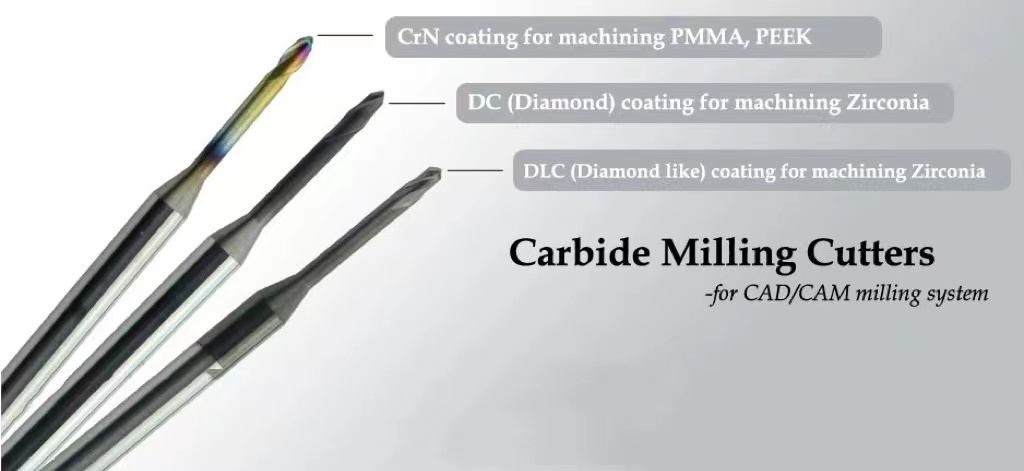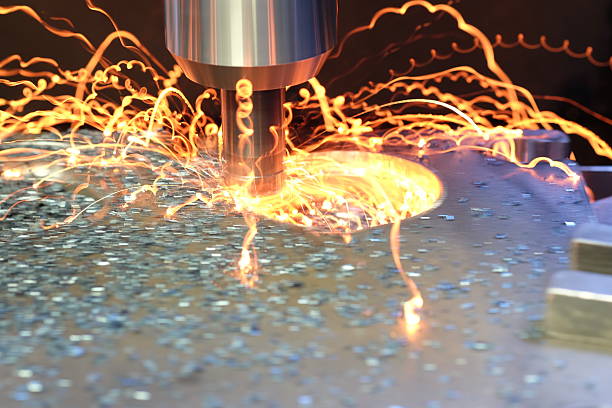The milling bur is a multi-tooth rotary cutter, and each tooth is equivalent to a turning tool fixed on the rotary surface of the milling burs. During milling, the cutting edge that participates in cutting at the same time is longer, and there is no idle stroke, and the Vc is also higher, so the productivity is higher. There are many types of milling cutters, with different structures, and a wide range of applications. According to their uses, they can be divided into three categories: milling cutters for processing planes, milling cutters for processing grooves, and milling cutters for processing forming surfaces.
The choice of grinding and milling tools is very important for dental materials, as the role is determined between milling equipment and milling equipment.Milling burs are mainly divided into cylindrical cutting tools ,contact burs, end milling cutters, three-face milling burs, etc.
Cylindrical and annular milling burs
The cutter teeth are distributed around the circumference of the milling cutter and are divided into straight teeth and helical teeth according to the tooth shape. There are two kinds of coarse teeth: those with fewer teeth and those with more. The helical-tooth coarse-tooth milling cutter has few teeth, high tooth strength, and large chip space, which is suitable for rough machining; the fine-toothed milling cutter is suitable for finishing.
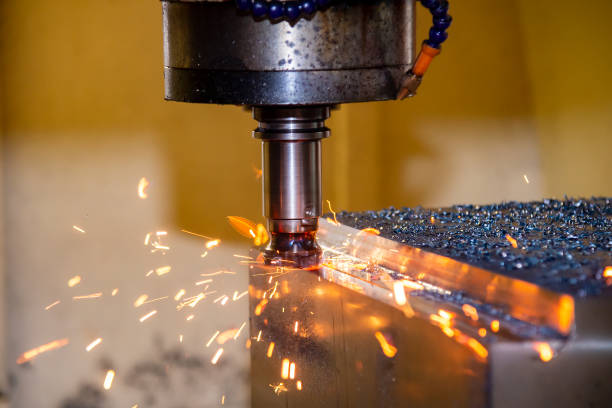
Contact hour
It is used for machining planes on vertical milling machines, face milling machines, or gantry milling machines. There are cutter teeth on the end face and circumference, as well as coarse teeth and fine teeth. Its structure has three types: integral type, insert type, and indexable type.
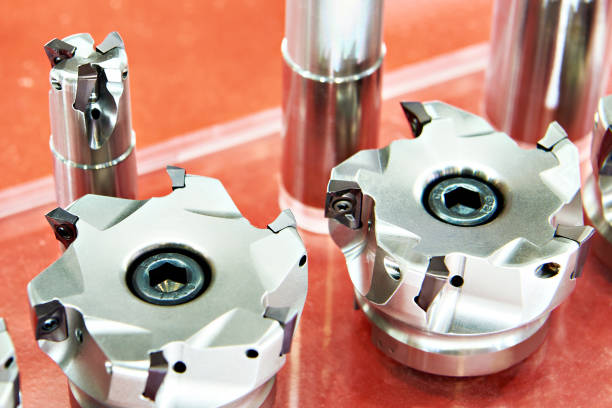
End-milling-cutters
It is used for processing grooves and stepped surfaces, etc. The cutter teeth are on the circumference and end face, and cannot be fed in the axial direction during operation. Axial feed is possible when end mills have through-center end teeth.
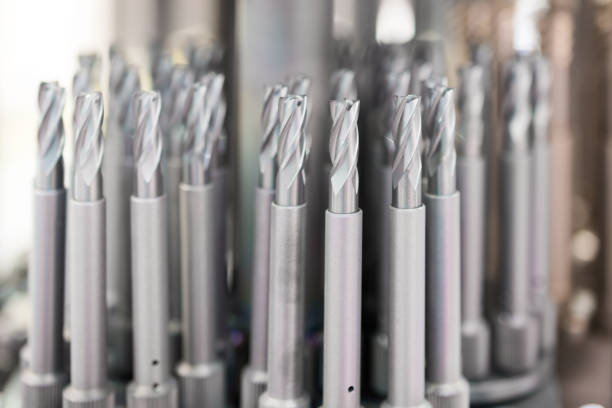
Three-face milling burs.
This type is used to make grooves and stepped surfaces, and it has teeth on both the inside and outside of the cutter.
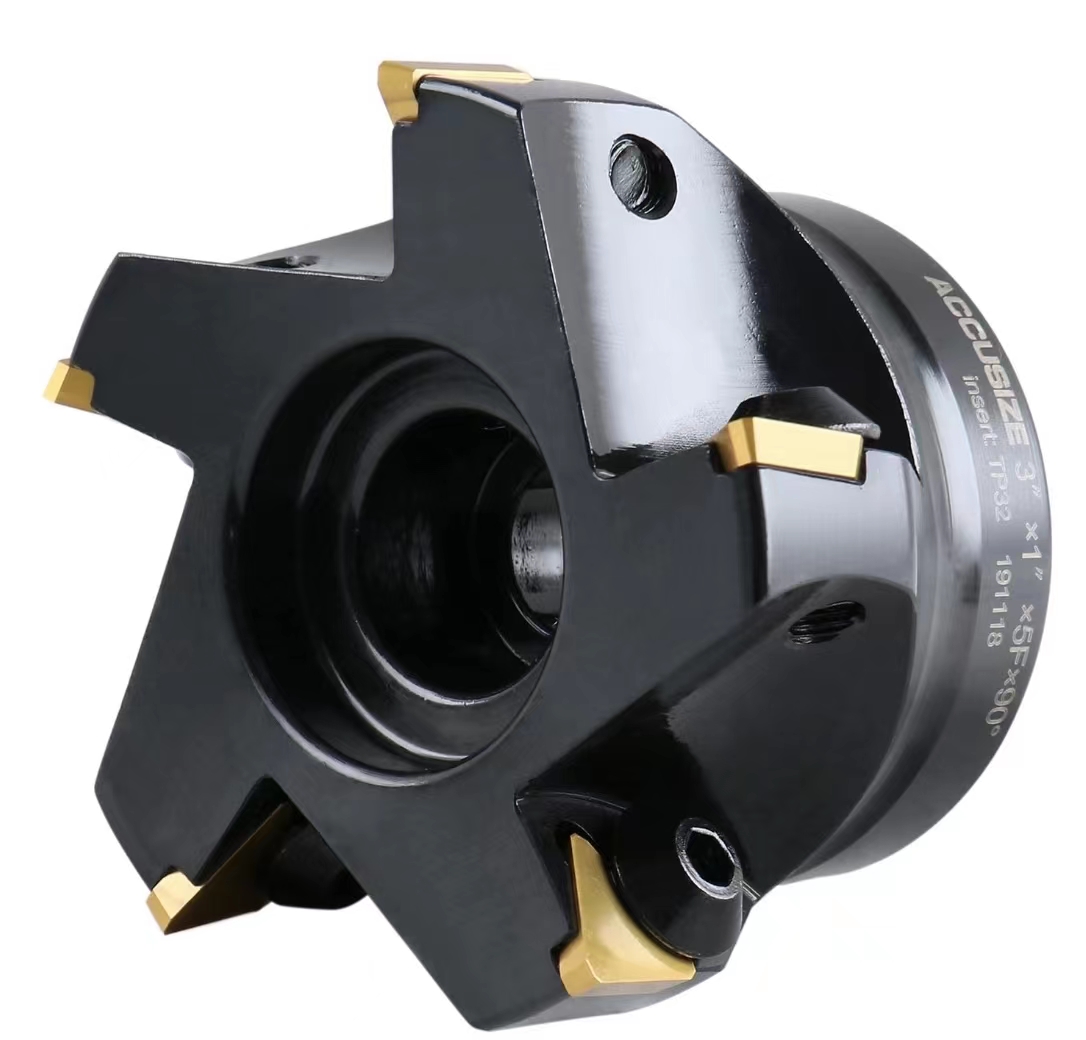
Milling burs use different coatings for different materials. For example,DLC, DC, and CrN.
1.DLC coating, which is the most commonly used one, can be used on zirconium and wax.
From what we've seen, an Upcerama block milled with a DLC bur on a Roland system can have 90 to 130 teeth.But for the zirconia block of Wieland, it is harder than upcerama, so the lifespan will be a little shorter, from 75 to 110 teeth.
2.DC coating, the most durable type, especially for zirconium. It does not work with PMMA or wax.With DC coating, the lifespan is 7 to 10 times longer than that of DLC coating. It can mill 800 to 1100 teeth.
3.Its cutting surface is usually very smooth thanks to the CrN coating.
